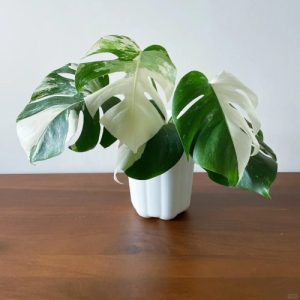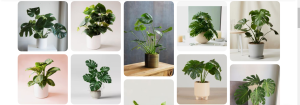- English
- Chinese
- French
- German
- Portuguese
- Spanish
- Russian
- Japanese
- Korean
- Arabic
- Irish
- Greek
- Turkish
- Italian
- Danish
- Romanian
- Indonesian
- Czech
- Afrikaans
- Swedish
- Polish
- Basque
- Catalan
- Esperanto
- Hindi
- Lao
- Albanian
- Amharic
- Armenian
- Azerbaijani
- Belarusian
- Bengali
- Bosnian
- Bulgarian
- Cebuano
- Chichewa
- Corsican
- Croatian
- Dutch
- Estonian
- Filipino
- Finnish
- Frisian
- Galician
- Georgian
- Gujarati
- Haitian
- Hausa
- Hawaiian
- Hebrew
- Hmong
- Hungarian
- Icelandic
- Javanese
- Kannada
- Kazakh
- Khmer
- Kurdish
- Kyrgyz
- Latin
- Latvian
- Lithuanian
- Luxembou..
- Macedonian
- Malagasy
- Malay
- Malayalam
- Maltese
- Maori
- Marathi
- Mongolian
- Burmese
- Nepali
- Norwegian
- Pashto
- Persian
- Punjabi
- Serbian
- Sesotho
- Sinhala
- Slovak
- Slovenian
- Somali
- Samoan
- Scots Gaelic
- Shona
- Sindhi
- Sundanese
- Swahili
- Tajik
- Tamil
- Telugu
- Thai
- Ukrainian
- Urdu
- Uzbek
- Vietnamese
- Welsh
- Xhosa
- Yiddish
- Yoruba
- Zulu
- Kinyarwanda
- Tatar
- Oriya
- Turkmen
- Uyghur

Often known as the “Swiss cheese plant,”Monsta Siltepecana bụ osisi mara mma. Ọtụtụ ndị na-anụ ọkụ n'obi abịawo ugwu n'ihi na ha na-akpụ akpụ na ikike mmepe ya. Ọ bụghị naanị na mma, mana osisi ezinụlọ Areacee nke a site na oke ọhịa nke Central na South America - na-agbakwunye ụfọdụ ihe sitere n'okike gaa na mbara ụlọ. Ọ bụla osisi nwere ịnụ ọkụ n'obi na-eche ihe kachasị mma ka ị debe anụ msta n'ime ikuku ime ụlọ ka o wee nwee ike ịba ụba.

Minsta
Monstera’s basic behaviors and traits
One such a climbing plant is Monstera. Growing upward to get sunshine, it attaches to trees using aerial roots in the natural surroundings. Under right light and humidity, this plant may exhibit great vigor. Though Monstera does not usually flower or develop fruit inside, its unusual leaf form and thick texture make it a perfect accent for any kind of interior design. Understanding Monstera’s development patterns can help us to create a more appropriate habitat for the plant therefore guaranteeing its strength and health.
Milbera nwere ọtụtụ mkpa maka ihe gburugburu ebe obibi dị ka ala, iru mmiri, okpomọkụ na ìhè. Monsta nwere ike igosi mkpa nlekọta na-enweghị atụ na rookie, mana n'eziokwu, ị ga - enwe ike ịnọgide na - enwe ọnọdụ na - abawanye ma ọ bụrụhaala na ị na - eche echiche.
Monstera’s lighting demands
Among the many elements influencing Monstera’s development is light. Monstera thrives in indirect medium to brilliant light. While it can survive in low light, the growth rate of Monstera will be greatly slowed down and the pore development of the leaves will also be hampered in cases of long-term lack of enough light. Monstera should be placed next to the east or west window, or the south window position with enough diffuse light to guarantee its healthy development. Monstera may be maintained outside in the summer, however it should be kept out of direct sunlight to avoid leaf burns.
Lack of light may be indicated if you discover that Monstera’s leaves start to lose their sheen or yellow. To make sure the plant is under suitable light circumstances, you might use a light meter at this moment to gauge the light intensity. Furthermore, applying plant development lights is a wise decision in seasons or places with little light, which may assist Monstera to expand in health.
Njikwa iru mmiri na ịgbara mmiri
Usually advised to water once every 1-2 weeks, Monstera’s dynamic water need lets the soil somewhat dry between waterings. Given enough light, Monstera has more water need, hence the frequency of watering should be increased. Regarding insufficient light, irrigation should be suitably cut to prevent too much water and root damage.
Monsta ga-arụ ọrụ karịa na gburugburu iru mmiri dị elu, ọkachasị mgbe edobere iru mmiri n'etiti 40% na 60%, ọ bụrụgodị na ọ nwere ike ịga nke ọma na iru mmiri dị n'ime. Ekwesịrị ka ikuku gị bụrụ nkụ nke ukwuu, ị nwere ike ịrịọ maka iji ihu igwe iji bulie iru mmiri, yabụ na-akwalite mmepe ahụike nke Mmiri ahụ. Ọzọkwa ịzere mmetọ na mmiri iji mebie mmiri ahụ na-eji mmiri ma ọ bụ mmiri a na-eme.
Iwe iwe kwesịrị ekwesị
Among the many elements influencing Monstera’s development is temperature. Monstera may thrive between 18°C and 30°C, hence the ideal temperature is between 65°F and 85°F. Temperatures below 15°C might either stunt or possibly induce frost damage for Monstera, therefore affecting its development. Monstera should therefore be moved to a warm room in winter, particularly when the temperature falls below 60°F (approximately 15°C), to avoid the cold from having negative effects on it.
Monstera’s growth rate will considerably slow down in a cold temperature environment, and the leaves can also become yellow or fall off. Monstera should therefore be avoided in areas with significant temperature variations, like windowsills or entrances, in winter or on chilly evenings. Proper regulation of the interior temperature will help Monstera to maintain strong growth even in winter.
Aro maka ịgbagharị Monsta na ala ala
Monstera has strong soil needs. Good drainage and air permeability as well as enough of organic matter should define the perfect soil. Usually advised to use a well-drained potting mix, perlite or volcanic rock may be added in sensible quantities to boost the soil’s aeration and drainage ability. Monstera has a well-developed root system, hence when selecting a pot, you should take into account giving it enough room for the roots to expand naturally.
The Monstera’s roots will progressively occupy the pot as it develops, entwined or exposed in the drainage holes. Repotting is essential right now. Usually, repotting is carried once every one to two years to guarantee the Monstera has appropriate nutrition supply and development area. Spring is the ideal time to repot as the Monstera is at its pinnacle of development and can better fit the new surroundings. To provide ample room for development, it is advised to choose a new pot for repotting one to two inches bigger than the original one.
Kwachaa na compaligingling Nyere Monsta ka ọ sie ike
N'oge opupu ihe ubi - mmiri na oge ọkọchị-mosta nwere ọtụtụ nri; Fallization na-eme ka njikọta oge na-enyere gị aka ịgbalite mmepe ya. A na-adụ ọdụ na fatịlaịza na-agbanye mmiri na-agbanye kwa izu abụọ kwa izu, a na-eme njikọ n'otu oge iji mee ka ị ghara ịda mbà na fatịlaịza banye n'ime ala. Ekwesịrị belata ma ọ bụ kwụsị na ụbịa na udu mmiri mgbe uto ọnụego oke nke Monstela na-akwụsịlata igbochi fatịlaịza na-esite na nnukwu nri. Inwere ike ịgbatị fatịlaịza oge kwesịrị ekwesị ma ọ bụrụ na ị na-eji ọkụ ọkụ iji nọgide na-eto mmiri na-eto eto n'afọ niile.
Idebe Monsta mara mma nke ukwuu na-adabere na kwachaa. Ọ bụ ezie na nhicha nhicha edo edo na-acha odo odo na overlong ị ga-eme ka Monsta nọrọ na ezigbo mmepe ogbo, ọ naghị achọ iwesa ugboro ugboro. Iji gbochie ọrịa nje na-esite na ihe ruru unyi, dị ọcha na-eji akwa a ga-eme ka ọ bụrụ mmiri na-eto eto n'oge a na buds ọhụrụ mepụtara ngwa ngwa.
Ofzọ nke ịgbasa Monsta
Cuttings kwere ka otu onye na-agbasa mmiri. Gbaa mbọ hụ na enwere mgbọrọgwụ na akwụkwọ na-eme ka ọ gwọọ ala ngalaba ahụ ike site na ịkpụ ha dị n'okpuru ọnụ. Zere ìhè anyanwụ site na itinye mpempe akwụkwọ na mmiri ma ọ bụ ala mmiri na gburugburu na-ekpo ọkụ. Ebe ala ndị toro eto chọrọ mmiri mgbe ọ bụla ruo mgbe mkpụrụ osisi ahụ gbanyere mkpọrọgwụ, mmiri na-eto eto ga-enwerịrị izu ike kwa izu iji nọgide na ịdị ọcha ya. Enwere ike ibugharị mkpụrụ osisi ahụ n'ime ite ọhụrụ ma na-elekọta oge niile mgbe usoro mgbọrọgwụ amalitela.
Okwu mmiri na-ahụkarị
Ọ bụ ezie na Mmiri Mosbe bụ ihe dị ala ala, enwere ụfọdụ nsogbu ị nwere ike ịbanye n'ime mgbe ị na-elekọta. Ihe ndị a bụ ụfọdụ mgbaàmà na ndụmọdụ iji na-edozi ha:
Ọtụtụ mgbe, enweghị mmiri ma ọ bụ nnukwu gburugburu ebe a na-akpọnwụ na-eme ka ahịhịa na-acha aja aja ma na-emebi emebi. Mmiri mgbe niile; Ọzọkwa, nyefee iru mmiri ikuku.
Osisi nke wolts ma ọ bụ ite ite furu: Nke a nwere ike si arụpụta nke oghere na-ezughị ezu ma ọ bụ enweghị mmiri. Mmiri ozugbo; Chee echiche ịgbagharị iji nyekwuo ụlọ oriri.
Na-ahapụ odo ma ọ bụ ị ga-asụ ojii: Nke a nwere ike ịbụ mgbọrọgwụ ire ere. Mmiri na-abụkarị mmiri; Ọzọkwa, Monito ala igbapu.
If Monstera’s leaves lack their characteristic pores, either the plant is not yet mature or the light or humidity is inadequate. Monstera will develop lovely leaves provided enough light, moderate humidity, and correct support are present.
Monstera’s distinctive leaf form and simple care are what appeal to me.

Monsta Thai
Ọ bụghị naanị Minsta Nnukwu mma mma maka ebe, mana lekọta nlekọta zuru oke ọ nwere ike igosipụta ndụ siri ike. Monsta ga-eme nke ọma n'ụlọ gị ma tụgharịa ebe a na-acha akwụkwọ ndụ ọ bụrụhaala na ị nwere ezigbo ihe ọmụma banyere nlekọta ya. Monsta ga-etolite na mpaghara dị mma, iru mmiri na-agbanwe agbanwe ma na-enwe ọnọdụ dị elu, si otú a na-enye gị na mma gburugburu ebe obibi na mma.
Previous News
Tips for keeping Dracaena Arborea healthy in wi...Next News
Ofzọ Mgbasa nke aphelandra Daania


